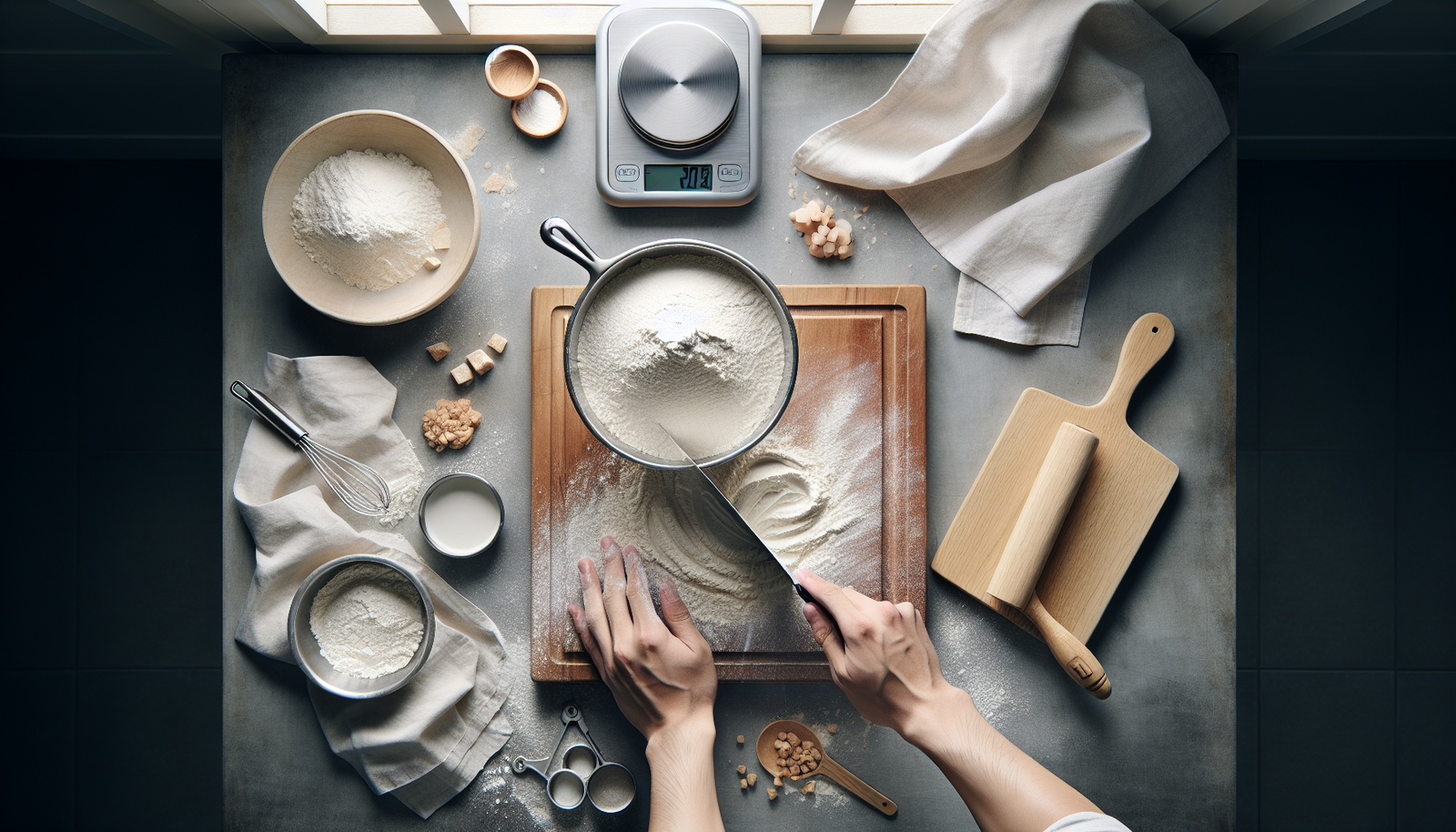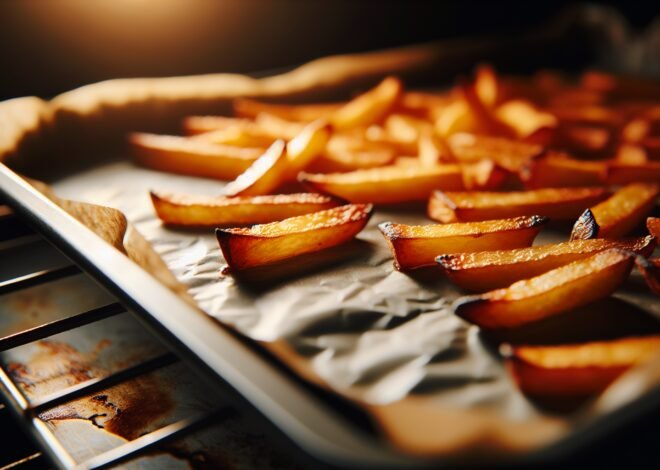
How to Measure Flour for Bread Dough to Get the Right Consistency
Measure flour for bread dough accurately to ensure the perfect consistency every time. Did you know that incorrectly measuring flour can lead to dense or flat bread? Consistency in measurement is crucial for achieving the desired texture and structure. This article provides tips and techniques on how to measure flour correctly, whether you’re using a scale or measuring cups. Understanding these methods will empower you to bake beautifully textured bread, boosting your confidence and mastery in bread-making. Dive in to discover techniques that will enhance your baking skills and guarantee flavorful results.
### Importance of Accurate Flour Measurement in Bread Baking
Bread baking is an art form that relies heavily on precision. Accurate flour measurement is foundational to achieving the right texture, flavor, and rise in your bread. This section will dive into why measuring flour correctly is crucial and how it affects every aspect of the bread-making process.
#### Common Mistakes When Measuring Flour for Bread Dough
When it comes to measuring flour, small mistakes can lead to big differences in your bread quality. One common error is scooping flour directly from the bag using a measuring cup, which can pack the flour and lead to using more than needed. Another mistake is neglecting to level off the excess flour, which results in inaccurate amounts. Additionally, not accounting for the type of flour used can lead to variances in moisture and protein content, affecting the dough’s texture.
Many bakers fail to adjust measurements when using different types of flour, like all-purpose versus bread flour. Each has distinct properties that can alter the bread’s outcome. Furthermore, using cups instead of weighing flour can result in inconsistent measurements due to varying cup sizes and packing methods. Understanding these pitfalls can help you avoid them and ensure your bread turns out perfectly every time.
#### Benefits of Proper Flour Measurement for Bread Texture
Accurate flour measurement ensures a consistent dough structure, leading to better texture and rise. By measuring flour precisely, you control the gluten network that develops during mixing and kneading. This network gives bread its chewy texture and structural integrity. Proper measurement also balances the dough’s hydration level, which influences the bread’s crumb and crust.
The right amount of flour allows yeast to work optimally, aiding in fermentation and flavor development. With precise measurements, bakers can achieve a delicate balance between a light, airy crumb and a sturdy, supportive crust. This balance is key to creating bread that is not only visually appealing but also delightful to the palate. Additionally, well-measured flour helps prevent issues like dense, heavy loaves or bread with an uneven crumb.
#### How Incorrect Measurements Affect Bread Dough Consistency
Incorrect flour measurements can drastically alter dough consistency, leading to baking disappointments. Too much flour makes the dough stiff and difficult to knead, resulting in dense bread with minimal rise. On the other hand, too little flour makes the dough sticky and hard to shape, often leading to bread that collapses during baking.
Inconsistently measured flour affects the dough’s ability to hold gases produced by yeast, impacting the bread’s volume and texture. Uneven flour distribution can cause pockets of dry flour in the dough, leading to irregular textures and flavors. Understanding how flour measurements impact dough consistency is vital for troubleshooting baking issues and achieving desired results.
### Techniques for Measuring Flour for Bread Dough
Understanding the proper techniques for measuring flour can make the difference between an average loaf and a showstopper. This section explores methods that ensure precision and consistency in your bread baking endeavors.
#### Using the Scoop and Level Method for Accurate Flour Measurement
The scoop and level method is a classic technique used by bakers to measure flour accurately without the use of a scale. Here’s how to do it:
1. **Fluff** the flour in its container or bag to aerate it.
2. **Scoop** the flour gently into a measuring cup without compacting it.
3. **Level** off the excess flour with a straight edge, like the back of a knife, ensuring a precise measure.
This method helps prevent the common issue of packing too much flour into the measuring cup. While not as precise as weighing, it offers a reliable alternative when a kitchen scale isn’t available. Ensuring the cup’s level surface is crucial to achieving the correct measurement every time.
#### Weighing Flour with a Kitchen Scale for Precision
Using a kitchen scale to weigh flour offers the highest accuracy and consistency. Weighing flour eliminates the guesswork and ensures you use the exact amount needed. Most bread recipes provide flour measurements in grams or ounces, making it easy to follow with a scale.
– **Turn on** the scale and set it to zero with the bowl or container on it.
– **Spoon** the flour into the container until reaching the desired weight.
– **Adjust** as needed by adding or removing flour to match the recipe’s requirements.
This method is particularly beneficial when baking in bulk or adapting recipes, as it maintains the flour-to-liquid ratio precise. Kitchen scales are a worthwhile investment for serious bakers aiming for perfection and consistency in their baked goods.
#### How to Sift Flour Properly When Measuring for Bread
Sifting flour is an important step that aerates and removes any lumps or impurities. Here’s the proper way to sift flour for bread baking:
– **Place** a fine-mesh sieve over a bowl.
– **Add** the required amount of flour into the sieve.
– **Gently shake** or tap the sieve to allow the flour to fall through.
Sifting not only ensures the flour is light and airy but also helps evenly distribute any added ingredients like salt or baking powder. While some bakers may skip this step, sifting can make a noticeable difference in the texture of the final bread product. It ensures that the flour incorporates seamlessly into the dough, promoting even mixing and a smooth finish.
### Adjusting Flour Measurements for Different Bread Types
Different types of bread require varying flour measurements and types. This section explores how to adapt your flour measuring techniques to suit specific bread types, ensuring you achieve the best results every time.
#### Measuring Flour for Whole Wheat Bread Dough
Whole wheat flour has a different texture and moisture content from white flour. It absorbs more liquid, which can affect the dough consistency. When measuring for whole wheat bread:
– **Use slightly less** whole wheat flour than white flour, as it is denser.
– **Increase hydration** by adding a bit more liquid to compensate for the flour’s absorbency.
– **Consider mixing** whole wheat with all-purpose flour to balance texture and density.
Whole wheat bread dough benefits from resting periods, allowing the flour to fully absorb the liquid and develop its gluten network effectively. Understanding these nuances helps in achieving a well-balanced whole wheat loaf with a hearty texture.
#### Adjusting Flour Ratios in Gluten-Free Bread Baking
Gluten-free bread requires a different approach, as it lacks the natural elasticity gluten provides. When working with gluten-free flour blends:
– **Follow specific** recipes, as gluten-free flours vary widely in their properties.
– **Increase binders** like xanthan gum or psyllium husk to mimic gluten’s elasticity.
– **Balance the mix** of gluten-free flours to achieve the desired texture and flavor.
Gluten-free baking often involves trial and error to find the perfect ratios and combinations. Weighing the flour is crucial to maintain consistency, as the density of gluten-free flours can vary greatly. With practice and attention to detail, you can master gluten-free bread baking with great success.
#### Adapting Measurements for High-Altitude Bread Baking
Baking at high altitudes presents unique challenges, as the decreased air pressure affects flour’s interaction with liquids and yeast. To adapt flour measurements:
– **Reduce flour** slightly to prevent a tough, dry texture.
– **Increase hydration** to counteract the drier environment.
– **Adjust rising times**, as dough may rise faster at high altitudes.
Making these adjustments ensures your bread maintains its desired texture and rise despite the altitude challenges. Understanding the impact of elevation on ingredients and processes is key to successful baking in high-altitude regions.
By mastering these flour measurement techniques and adjustments, you can enhance your bread-baking skills and consistently produce delicious and aesthetically pleasing loaves.
Conclusion
Accurately measuring flour is crucial for successful bread making. Use a kitchen scale for precise measurements, as flour density can vary. For dry measuring cups, spoon flour into the cup and level it with a knife. Avoid scooping directly from the bag to prevent packing and excess flour. Proper measurement ensures dough consistency and optimal bread texture.
“`html
FAQ
How much flour should I use for homemade bread dough?
The amount of flour needed can vary, but a typical recipe might call for around 3 to 4 cups. Adjust based on the dough’s texture as you mix.
What is the best type of flour for bread-making?
Bread flour is ideal due to its high protein content, which gives bread its chewy texture. All-purpose flour can also work in most recipes.
How can I properly measure flour for bread dough?
Use the spoon-and-level method. Spoon the flour into your measuring cup, then level it off with a knife for accuracy.
Why is flour measurement important for bread dough consistency?
Accurate measurement ensures the right dough texture, affecting rise and flavor. Too much flour makes dough dry; too little makes it sticky.
Can I substitute different types of flour in bread recipes?
Yes, but substitutions may alter texture and flavor. Whole wheat flour adds density, while gluten-free options need additional adjustments.
How does flour weight affect bread dough hydration levels?
Flour weight impacts hydration. More flour absorbs more liquid, affecting dough consistency and rise. Precise measurement helps maintain balance.
“`











